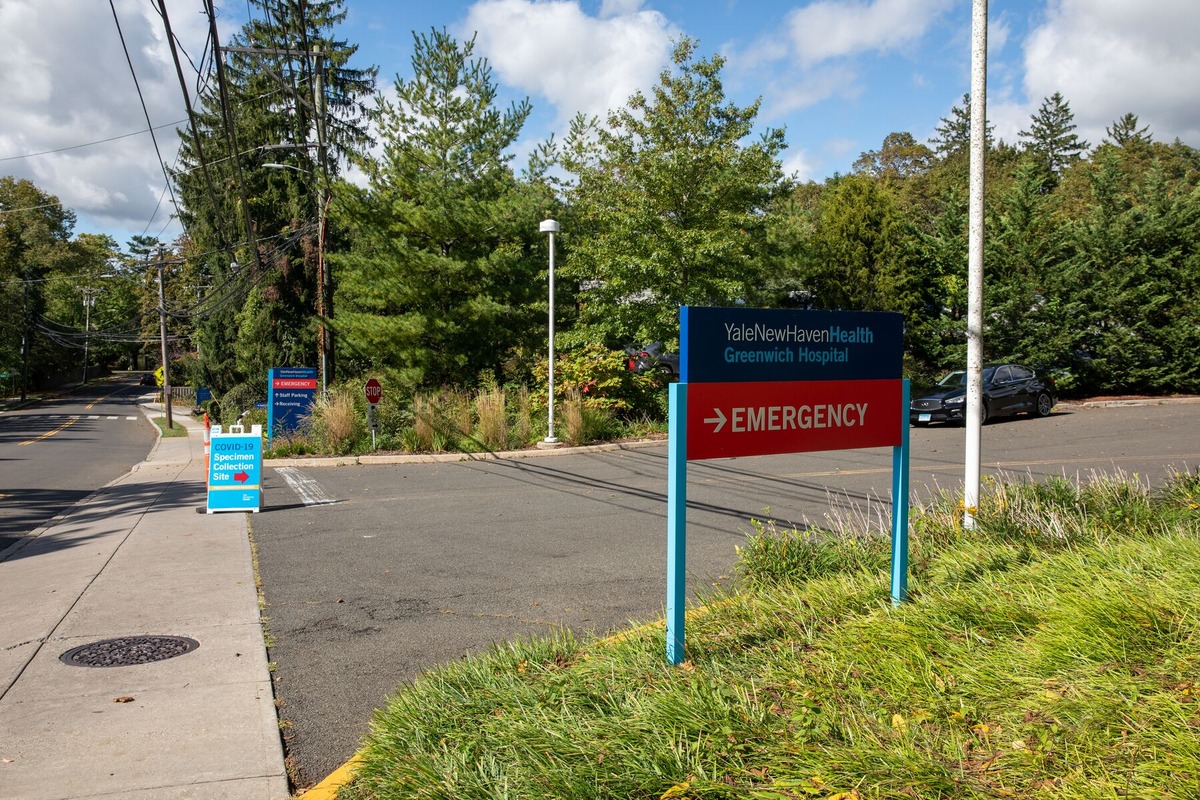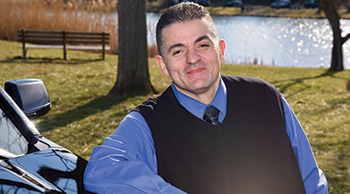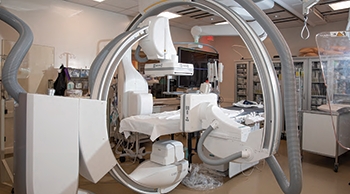-
Services
Featured Services
-
Locations
Location Type
Hospitals and Multispecialty Locations
-
Patients & Visitors
Published August 06, 2020


Joseph Perez never imagined his extra-long work day driving a limousine would end in an ambulance racing to Greenwich Hospital to undergo life-saving stroke surgery. The symptoms were evident when he arrived at his Port Chester, NY home. His father noticed his slurred speech. Perez, 50, felt dizzy while putting a gallon of milk in the refrigerator. As he sat on his bed, he realized his right leg and arm were partially paralyzed and he couldn’t pronounce any words. He began grunting to alert his father, who called 9-1-1.
The first responders rushed Perez to Greenwich Hospital for mechanical thrombectomy, a minimally invasive procedure to remove blood clots from the brain. Perez regained his mobility and speech in the operating room within minutes of having the clot removed by Akli Zetchi, MD, a cerebrovascular neurosurgeon. He was awake with mild sedation during the procedure. “I was moving and talking with no problem,” said Perez. “It was a miracle! Dr. Zetchi saved my life.”
Greenwich Hospital has launched a multimillion-dollar neuroscience program that includes life-saving mechanical thrombectomy, becoming the only facility in lower Fairfield County to offer an academic medical level of stroke care.
The hospital has the most advanced, dedicated Biplane Neuroangiography Suite and resources to offer this advanced treatment for acute stroke around the clock. The expansion is part of a $160 million strategic investment over the next five years to expand clinical services to Connecticut and New York residents.
Physicians can now treat stroke, carotid artery disease, brain aneurysms, vascular malformations of the brain and spinal cord, brain tumors, adult-onset hydrocephalus and traumatic brain injury.
“Mechanical thrombectomy has revolutionized the treatment of acute strokes because we can perform this intervention up to 24 hours from the onset of symptoms, which means we can potentially treat more people,” said Dr. Zetchi, the Yale Medicine physician spearheading Greenwich’s program. “It’s a game changer because this advanced level of stroke care does not require major surgery. We are seeing amazing recoveries right in the operating room.”

At Greenwich Hospital, stroke patients are treated in a new $4.5 million neuroscience interventional laboratory that features neuro biplane three-dimensional imaging. A neuro interventionist along with specially trained nurses and technicians are on standby 24/7 to respond to a stroke alert. Candidates for mechanical thrombectomy also undergo a brain perfusion scan to assess the size of the stroke and how much brain tissue is at risk of dying. Biplane imaging plays a critical role in the delivery of safe stroke care, explained Dr. Zetchi.
“The system uses two mounted rotating cameras that simultaneously capture detailed images of the brain,” he said. “This allows physicians to quickly and precisely identify the blood vessels affected.”
During a mechanical thrombectomy, physicians thread a thin catheter with a stent through an artery in the groin up to the blocked artery in the brain, using biplane imaging as a guide. Physicians remove the stent once the device has trapped the blood clot.
Stroke is the nation’s fifth cause of death and a leading cause of long-term disability, according to the American Stroke Association. A stroke occurs when a blood vessel carrying oxygen and nutrients to the brain becomes clogged by a clot (an ischemic stroke) or bursts (a hemorrhagic stroke). Every minute counts when it comes to diagnosing and treating stroke because brain cells that cannot get blood and oxygen begin to die, which can lead to temporary or permanent paralysis, language and vision deficits, and other problems.
“Time is critical because immediate treatment may reduce the long-term effects of a stroke and even prevent death,” said Charles Matouk, MD, section chief of neurovascular surgery at Yale Medicine, who has witnessed dramatic advancements in the field.
“When I was in training as a neurosurgeon, we didn’t even talk about stroke because it was exclusively a medical condition. There were no surgical options,” he said. “Now mechanical thrombectomy represents the most impactful thing I do as a neurosurgeon.”
Until a few years ago, the only available treatment for ischemic stroke was an intravenous clot-busting drug called alteplase (IV r-tPA) that must be administered within 4.5 hours of the onset of stroke symptoms. Mechanical thrombectomy, in contrast, can be performed on eligible patients with large clots in an artery within 24 hours of stroke symptoms. Patients who are eligible for alteplase receive this medication prior to mechanical thrombectomy. The 24-hour window for treatment with mechanical thrombectomy means individuals who wake up in the morning to discover they are experiencing symptoms of stroke should immediately call 9-1-1. Symptoms include face drooping, arm or leg weakness, speech difficulties, vision problems and balance issues.
“We need to change people’s mentality when it comes to stroke,” said Dr. Zetchi. “It’s not about ‘I had a stroke.’ It’s about ‘I’m having a stroke.’ There’s still a chance that mechanical thrombectomy can reverse stroke symptoms and, in some cases, save lives.”
Knowing the risk factors is the first step in preventing a stroke. Risk factors include high blood pressure, tobacco use, diabetes, high cholesterol, extreme stress, physical inactivity and obesity. Some cardiovascular conditions can increase the risk for stroke, as well. For example, the upper chambers of the heart quiver in people with atrial fibrillation (AFib), which causes the blood to pool and clot, increasing the risk of stroke.
“Stroke and heart disease go hand in hand,” said Dr. Matouk. “Likewise, the things that are good for the heart are also good for the brain in terms of preventing stroke. Th is includes maintaining a healthy weight, exercising, avoiding tobacco use, managing stress, having regular checkups and taking your medications as directed.”
Perez has multiple risk factors that increase his vulnerability, including a family history of stroke on his mother’s side. As the owner of JGP Limousine, he’s familiar with the added stress of running a small business. He had open heart surgery three years ago to replace a leaky heart valve and takes medication to thin his blood. But he hadn’t taken the blood thinners for a week leading up to the stroke.
“That was a big mistake,” said Perez, who has vowed to change his ways.
He plans to adhere to his medication regimen and adjust his work schedule so he doesn’t hit the road seven days a week. “There’s no sense playing Russian roulette with my life.”